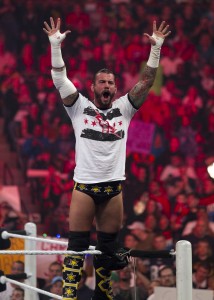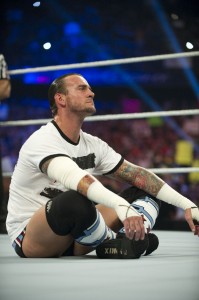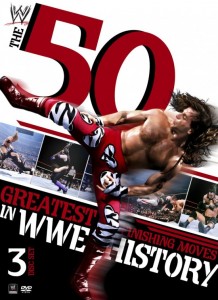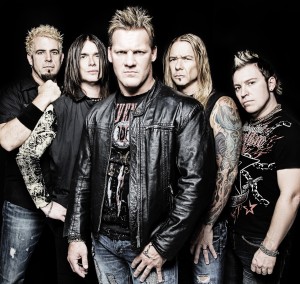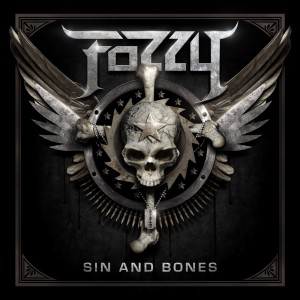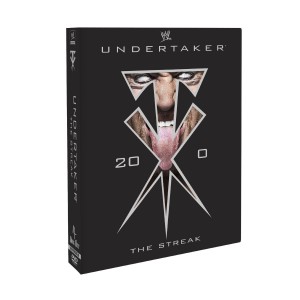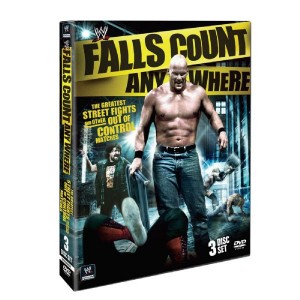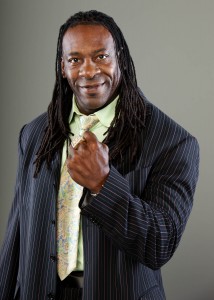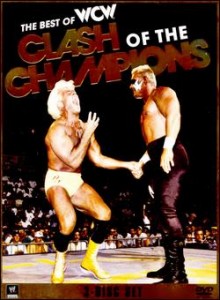Arguably the most highly anticipated DVD release in recent WWE history, CM Punk: Best in the World definitely takes a unique approach to showcasing one of wrestling’s most intriguing talents. While previous WWE DVD releases (especially those that focus on current superstars) have highlighted a respective 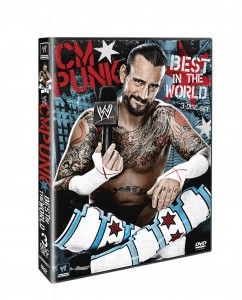 wrestler’s best WWE matches and moments, Best in the World is just as much about CM Punk‘s straight edge punk rock lifestyle as it is about his wrestling career. And when it comes to his in-ring accomplishments, this three-disc set is not limited to the work Punk has done since he joined WWE.
wrestler’s best WWE matches and moments, Best in the World is just as much about CM Punk‘s straight edge punk rock lifestyle as it is about his wrestling career. And when it comes to his in-ring accomplishments, this three-disc set is not limited to the work Punk has done since he joined WWE.
For a young Punk, pro wrestling was just another oddball form of escapism for a kid coming from a broken home. While he embraced punk rock, comic books and monster movies, he also found refuge in the brash antics of “Rowdy” Roddy Piper and the other pageantry he saw in the wrestling world. With commentary from his surrogate family and close friends such as Rancid‘s Lars Frederiksen, original trainer Ace Steel, longtime wrestling friend Colt Cabana and former WWE Women’s Champion Lita, Best in the World gets at the things that make up the Punk we know today. It seems that few topics are off limits as Punk talks about the drunken father that inspired his aversion to drugs and alcohol, the origins of the CM Punk moniker, the meanings behind many of his tattoos and the years of backyard and indie wrestling where Punk paid his dues.
As a result, Best in the World plays more like a documentary on one of yesterday’s stars rather than someone who is just reaching his championship potential. From the ex-girlfriend who encouraged Punk to embrace his punk rock attitude as his wrestling persona to indie rivals like Chris Hero (who appears here as Hero, not as his NXT persona of Kassius Ohno) to WWE friends and foes like Daniel Bryan, Triple H, John Cena and The Miz, it’s apparent that Punk’s self-made family is a tight-knit circle that crosses over from his personal to professional life. In an unprecedented move on WWE’s part, Best in the World includes footage from his early matches in Independent Wrestling Association Mid-South, his rise to prominence in Ring of Honor against the likes of Samoa Joe, the infamous Summer of Punk (read my review here), during which he signed his WWE contract on the ROH title, and his early Ohio Valley Wrestling matches.
It’s not until almost 45 minutes into Best in the World that we see Punk’s WWE debut thanks to Paul Heyman and the resurrected Extreme Championship Wrestling. And in true Punk fashion, he’s more than willing to discuss how he feels WWE misused him in his early days with the company, even during his runs as ECW, Intercontinental, World Tag Team and World Heavyweight Champion. But if there’s anything Punk is good at doing it’s adapting, and he realizes at numerous points on this DVD that in order to prove himself in WWE he will have to adapt in big ways.
In steps Punk’s big friend Luke Gallows, as well as Serena and Joseph Mercury, to form the Straight Edge Society. And while Punk was subversively turning himself into a Jesus-like Messiah on television, Best in the World reveals his more benevolent side behind the scenes when Mercury falls on hard times. Despite his best efforts with the SES, however, Punk soon becomes disgruntled yet again as others get championship opportunities. And that’s about the time that the pipe bomb goes off. In much the same way he had done years earlier in his final months with Ring of Honor, Punk dares to say what’s truly on his mind. He takes control of his fate with only a few weeks left on his WWE contract, and threatens to defeat Cena for the WWE Championship and leave the company with the title at last year’s Money in the Bank, in his hometown of Chicago.
My only criticism of Best in the World is its glorification of the events that transpire after Punk lives up to his promise and does, indeed, walk out the front door of the arena with the WWE title (only to tweet that now-infamous picture of it sitting in his refrigerator later that night). No one can argue the impact Punk had on WWE during the time leading up to Money in the Bank. But had his WWE return been postponed for a few more weeks (if not months), his actions would have carried even more weight. But considering that few (if any) other people would have dared to risk their future with WWE the way he did, this slight glorification of a series of events that did get many people’s attention is a very minor complaint.
What Best in the World proves, without a doubt, is that the Punk we see on TV and in WWE rings is the same person you might find at a Cubs game or in an airport. He can be brash and rude, but he can also be a leader and an inspiration (as he has been for veterans like William Regal and up-and-comers like Zack Ryder). And regardless of how you feel about him personally, there’s no doubt that Punk is one of the most entertaining guys to step into a WWE ring, which is displayed on the other two discs of this set. From an OVW match against Brent Albright and his ECW debut against Justin Credible to his WrestleMania XXIV Money in the Bank win and championship victories over John Morrison, Regal, Jeff Hardy and Chris Jericho, Punk makes it hard to deny that he is, as he likes to say, the “best in the world.” And with this DVD release, it seems that WWE is finally agreeing with him.

